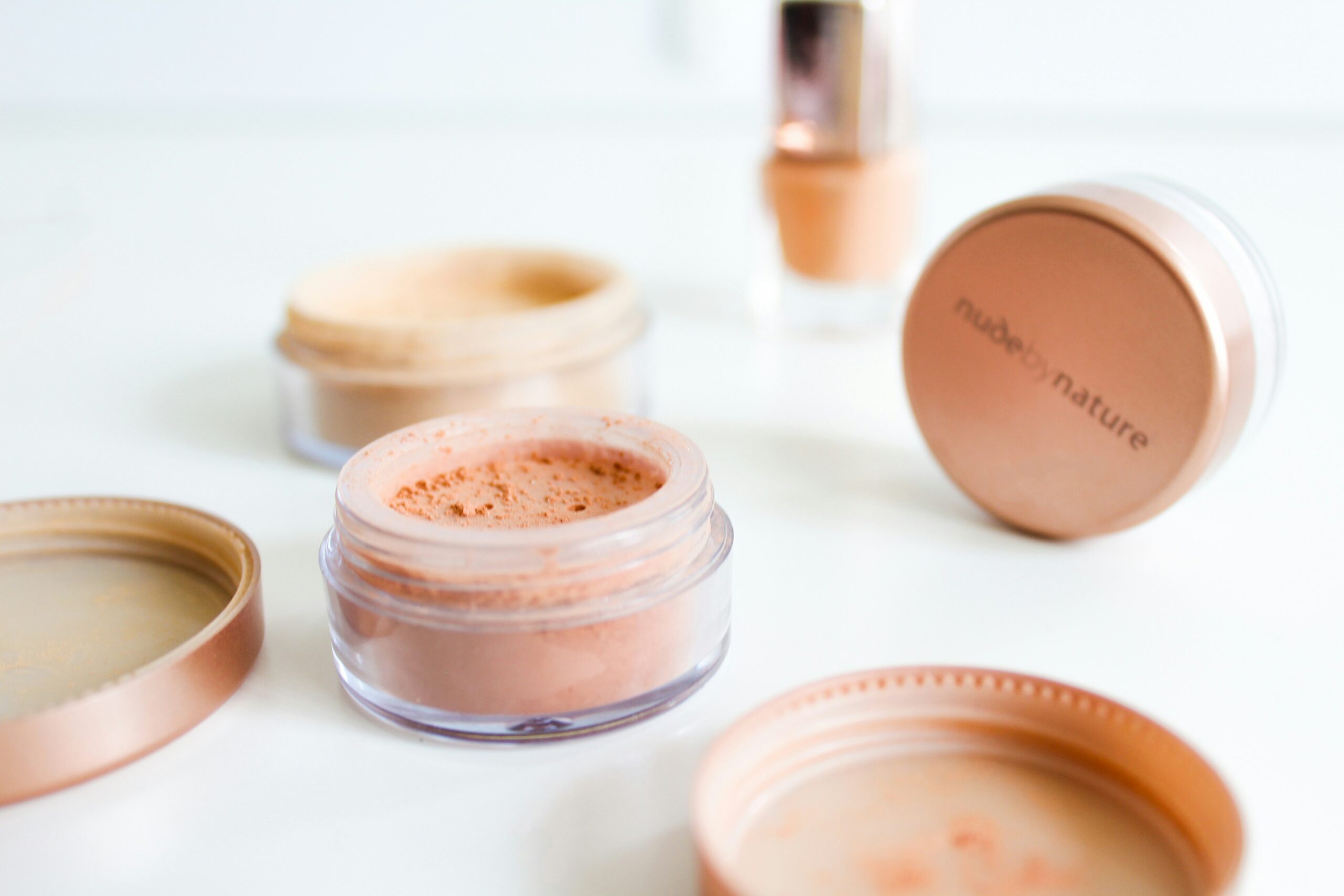Understanding Your Skin Undertone
Your skin’s undertone is the invisible hue beneath the surface that stays consistent. It’s crucial for choosing foundation shade. Undertones are usually warm (yellow or golden), cool (pink or blue), or neutral (a mix). To determine your undertone, try these tricks:
- Vein Test: Look at the veins on your wrist in natural light. If they appear greenish, you likely have a warm undertone. Bluish or purple veins often indicate a cool undertone. If you see a mix, you might have a neutral undertone.
- Jewelry Test: Does gold jewelry flatter you more than silver, or vice versa? Warm undertones shine with gold, while cool undertones pop with silver. If both look good, you may be neutral.
- Sun Reaction: Think about how your skin reacts to the sun. Warm undertones often tan or have a golden glow. Cool undertones may burn or have a rosy flush in the sun.
Understanding your undertone helps narrow down foundation lines labeled for warm, cool, or neutral skin. For example, if you have a warm undertone, foundations with golden or peachy hues blend more naturally on your skin.
Determining Your Skin Tone Category
Once you know your undertone, identify your general skin tone: fair, light, medium, tan, or deep. This is the surface color of your skin. For example, “fair skin” may cover porcelain or very light beige tones, while “deep skin” refers to rich brown or ebony tones. Each category has a range of foundation shades. As a starting point:
- Fair Skin: Often very pale with subtle pink, peach, or neutral undertones.
- Medium Skin: Tans easily with warm or olive undertones.
- Deep Skin: Rich brown or ebony with warm or cool undertones.
Be honest about your tone. If you struggle to categorize, think of which celebrity or friend you match in skin shade, without makeup. Remember, many brand ranges label shades by tone group, but always test a product – the same shade number can vary between brands.
How to Find Your Perfect Foundation Shade
Follow these essential steps to choose foundation shade correctly. Each step of the process ensures your match will look natural.
Quick Steps to Finding Your Foundation Match
- Identify Your Undertone: Warm, cool, or neutral? Use vein and jewelry tests to check.
- Know Your Skin Tone: Fair, light, medium, tan, or deep. Note how much sunlight affects your skin color.
- Test Shades on Your Jawline: Swipe a few candidate shades along your jawline or neck. The right one should almost disappear into your skin.
- Check in Natural Light: Go outside or stand by a window. Natural daylight shows true color better than indoor lighting. The perfect shade will look undetectable on your jaw.
- Allow for Oxidation: Let the foundation sit for a few minutes. Some formulas darken slightly (oxidize) after application. The best match won’t turn too orange or pink after a few minutes.
- Adjust if Needed: If you notice the shade is slightly off, mix two shades or try a different formula (like a sheer tinted moisturizer vs. full-coverage formula). A slight mix can achieve a customized match.
By picturing this infographic, you get a clear overview: first, figure out who you are (tone and undertone), then test in the best place and light, and finally pick the shade that vanishes into your skin.
Testing Foundation Shades Correctly
When testing, always use the right area and technique. Here’s how to test without wasting product:
- Use Your Jawline: Apply stripes of different shades from cheek to jaw. The skin on your jaw meets both face and neck, so matching here avoids a mismatched face vs. neck.
- Blend a Bit: Lightly blend each swatch. The best match is the one that seems to blend seamlessly into your skin.
- Compare Adjacent Shades: Sometimes two shades might both look okay. Pick the one that is just slightly lighter (you can add warmth with bronzer) rather than too dark, which can look muddy.
- Use Sample Strips or Samplers: If your store offers samples or test strips (like those foundation test cards), use them to compare several shades at once. If possible, take home a small sample to see how it wears throughout the day.
After selecting a likely match, let the makeup sit on your skin and then view it outdoors. The right foundation should essentially disappear (you should only see your natural skin texture, not color mismatch).
Foundation Shade Tips for Fair Skin
Fair skin needs special care in choosing foundation:
- Avoid Too-Orange Shades: Some foundations are too yellow or pink for very light skin and can leave a cast. Look for descriptors like “ivory,” “porcelain,” or “fair with pink undertones.”
- Consider a Sheer Base: Very pale skin can be overwhelmed by heavy, opaque formulas. A tinted moisturizer or a sheer foundation formula might provide coverage that looks more natural.
- Rosy vs. Yellow Hues: Decide if your fair skin has a rosy (cool) or golden (warm) undertone. A pinkish foundation can brighten cool fair skin, while a slightly golden shade can warm up fair skin with yellow undertones.
- Watch Out for Caking: If you have fair, dry skin, ensure the foundation doesn’t settle into fine lines. Prep with moisturizer and maybe use a hydrating primer.
- SPF and Flashback: Some pale skin tones notice flashback with high SPF products. If you’ll be photographed, consider a foundation with less SPF or use powder with a low SPF to avoid the white cast in photos.
Tools and Techniques for Foundation Matching
Besides physical testing, there are helpful resources and technology to assist you:
- Shade Finder Quizzes: Many beauty websites offer quizzes (though skip brand names) that ask about your preferences and shade range. They can be a starting point, but always confirm with a physical test.
- Beauty Counter Machines: Some stores provide devices that scan your skin and suggest a match. This can be helpful, but results vary by lighting and device calibration. Treat machine recommendations as guides, then follow the steps above to be sure.
- Makeup Apps: There are phone apps where you can upload a photo to see virtual shade matches. They can give ideas, but again, always do a real-life swatch test.
- Consult a Professional: If possible, have a makeup artist or counter associate do a color match for you (many retailers offer this service free). Then verify yourself in daylight, since opinions can differ.
Remember, tools and apps are only a start. Skin is nuanced, so your eyes and natural light are still the best judges. For a quick routine, even if you don’t have much time, choosing the correct shade means your whole makeup look — whether a quick five-minute face or a detailed smokey eye — will be flawless.
For example, after finding your shade, learn how it fits into your 5-Minute Everyday Makeup Routine for Busy Professionals, which shows you how to apply makeup efficiently when you’re short on time.
Common Foundation Matching Mistakes to Avoid
Even with good techniques, avoid these pitfalls:
- Testing on the Wrong Area: Matching on your wrist or hand is unreliable because these areas have different tones than your face/neck. Always use your jawline or neck.
- Ignoring Undertone: Picking a shade based only on lightness without considering undertone can lead to a match that’s too pink or too yellow. Both aspects matter.
- Skipping Natural Light Check: Fluorescent or indoor lighting can be misleading. A shade can look perfect under store lights but too dark or too light outside.
- Forgetting Skin Changes: Skin can darken slightly in summer or if you tan. It’s wise to re-evaluate your foundation in different seasons. If you do tan, you may need a slightly deeper shade in summer and a lighter one in winter.
- Setting in Shade: Always test and set your shade while standing in daylight. Even if it seems fine indoors, stepping out into natural light is crucial for a final check.
Cruelty-Free and Budget-Friendly Foundation Options
Choosing the right foundation shade doesn’t have to break the bank or compromise your values. Many great cruelty-free foundations come in a wide shade range. If you prefer products not tested on animals, look for brands that boast cruelty-free formulas and check their shade maps.
You might also enjoy exploring Cruelty-Free Makeup Brands That Actually Perform to find top-rated options.
On a budget? There are excellent affordable foundations and even some dupes that match high-end quality. Don’t overlook drugstore and budget-friendly brands. In fact, our guide to Top 10 Budget-Friendly Makeup Dupes That Beat High-End Products includes some wallet-friendly foundation suggestions.
When shopping, take advantage of in-store testers and swatch comparisons to ensure the cheaper foundation matches your shade perfectly, just like the big brands.
Lock in Your Flawless Foundation Match Every Time
Finding the perfect foundation shade is all about knowing your undertone and skin tone, testing carefully (especially on your jawline and in natural light), and avoiding common mistakes. Take your time with swatches and remember that it’s okay to blend two shades if you fall between tones.
With a well-matched foundation, every makeup look — from a quick everyday routine to bold smokey eyes — will start on a flawless base. By following these steps, your foundation will blend seamlessly with your skin, giving you a natural, glowing finish.

Hi! I’m Katia Luján, an SEO and Content Marketing expert with over 10 years of experience helping websites grow organically and get approved by Google AdSense.
I’ve worked in Google’s Trust & Safety team for AdSense and have helped more than 100 websites comply with monetization policies. Currently, I’m the strategist behind Buzzlix—creating SEO-optimized, high-quality content on beauty, skincare, and self-care.
I’m passionate about empowering others with actionable, sustainable, and accessible beauty content.


Leave a Reply